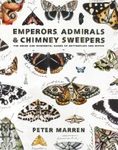By
Leon (NHBS Catalogue Editor)
28 Jan 2019
Written for Hardback

The term “wildlife” tends to evoke images of apex predators, cuddly creatures, or flagship species – usually vertebrate, usually mammalian – living outdoors in the wilderness of jungles, plains, or oceans. But what about closer to home? What about in your home? Ecologist Rob Dunn has written a delightful book showing that we live amidst a veritable zoo.
As I mentioned in my review of
Planet of Microbes, microbes are literally everywhere. The bacteria and parasites that live on and inside of us have received plenty of attention, especially the ones that cause infection and disease. Dunn himself previously wrote
The Wild Life of Our Bodies Today, but see also
Tapeworms, Lice, and Prions and
People, Parasites, & Plowshares for entertaining introductions.
But what lives on our bodies also lives around us, feeding on trails of flaking skin, loose hairs and fingerprints. Urban areas, and with it indoor spaces, have become an enormous habitat on our planet. Bar some species that cause us grief (see for example
Infested), they are also grossly understudied.
Dunn has spent the last few decades running a rather unorthodox research programme, studying everything from the dust on doorsills, the gunk inside shower heads, the insects and other arthropods crawling around houses, the parasites dragged in by our pets, and the microbes in our food. The fact that such research would be considered unusual reveals much about the tunnel vision of most biologists – and funding agencies – by overlooking the mundane wonders right under our noses.
With much flair and a sense of humour Dunn here reveals worlds unseen. For example, a survey of forty houses documented eight thousand (!) species of bacteria. Shower heads and boilers are home to heat-loving microbes that rain down on us every time we shower. Even our water, whether bottled spring water or tap water, contains many microbes and tiny crustaceans we gulp down daily. And the unique flavour of hand-made bread is as much to do with the recipe as the microbes living on the hand of the baker. Most visible of all are the insects crawling around the nooks and crannies of our houses, although Dunn’s research on the unnoticed invasion of camel crickets across the US goes to show we rarely pay attention. And here’s the rub: we need this zoo.
Ever since the acceptance of germ theory, we have focused on the harmful microbes. And throughout, Dunn emphasizes the good this has brought and the diseases (such as cholera) it has eradicated. Needless to say, though he stresses it anyway, basic hygiene, sanitation, and vaccines are important. But the idea that a little dirt is good for you is more than just a folk tale.
The problem is that our attitudes have shifted all the way to the other extreme. The notion of microbial biofilms showering down on your naked skin, and up your nose and mouth, will gross out most people. It shouldn’t. The vast majority of our domestic denizens are harmless and often even benevolent. By constantly cleaning and disinfecting our homes and ourselves, by hermetically sealing our houses from the outside world, we have created micro-environments poor in biodiversity. One of the topics Dunn explores throughout are the many studies that point to the subsequent rise in allergies, asthma, and auto-immune diseases that now plague developed societies.
And it gets worse. We may disinfect our houses, but we cannot sterilize them. The problem is that after we have killed the 99.9% of bacteria that our bottle of Dettol promised us, the remainder have little competition and will thrive on the dirt and crumbs we inevitably leave behind. So, rather than a biodiverse ecosystem where the different members keep each other in check, we create the perfect conditions for one or a few species of microbes or moulds to run rampant.
As with the overuse of antibiotics, we risk encouraging resistance in bacterial strains and insects, some of which make us ill. Despite the inventor of penicillin warning mankind at the time, we have gone down the path of chemical warfare anyway. And it is a battle we are losing, to the point that hospitals have become dangerous places harbouring antibiotic-resistant bacteria (see also my review of
Superbugs). These findings are some of the most powerful and relevant examples of evolution in action.
Dunn careens through this story with infectious enthusiasm.
Never Home Alone is a lively portrait of science at work, of the many collaborations involved, the hard and sometimes mind-numbingly repetitive work it requires, and the wonders of discovery. A red thread running through this book is how little we still know, how many questions we still have. And Dunn also convinces the reader this is not mere academic curiosity. There are many applications – industrial, pharmaceutical, or otherwise – just waiting to be discovered.
Without veering into the questionable territory oaf hokey health claims or New Age gobbledygook, what Dunn advocates is common sense. Wash your hands, but also go outside and get them dirty. What is really needed, first and foremost, is a shift in our attitudes. Rather than disgust, we need to foster an appreciation of the tiny lifeforms that share our homes and bodies, and an understanding that our health depends on them. Few are better positioned than Dunn to convincingly make that case, and
Never Home Alone is the perfect antidote to your microbial anxieties.



































